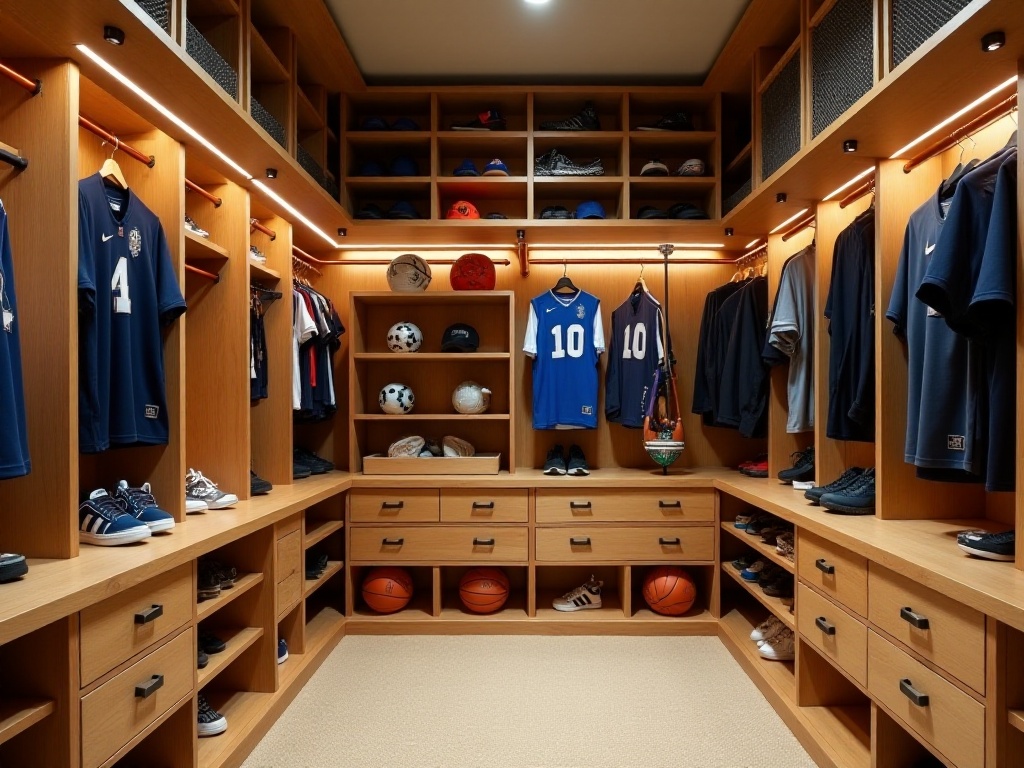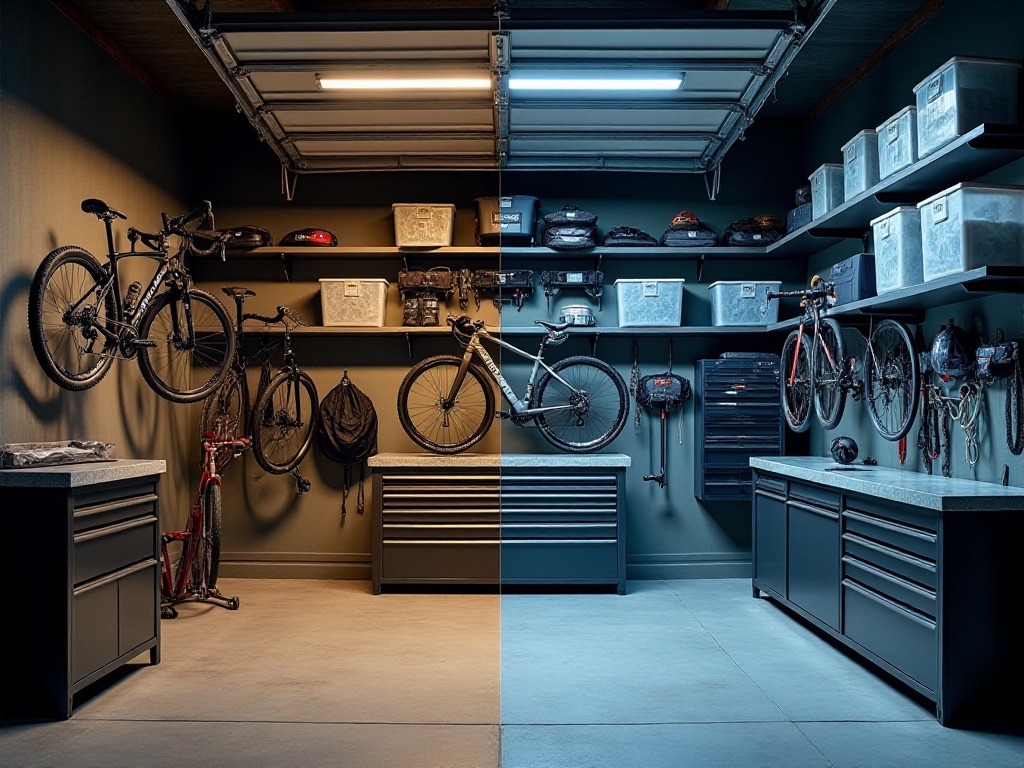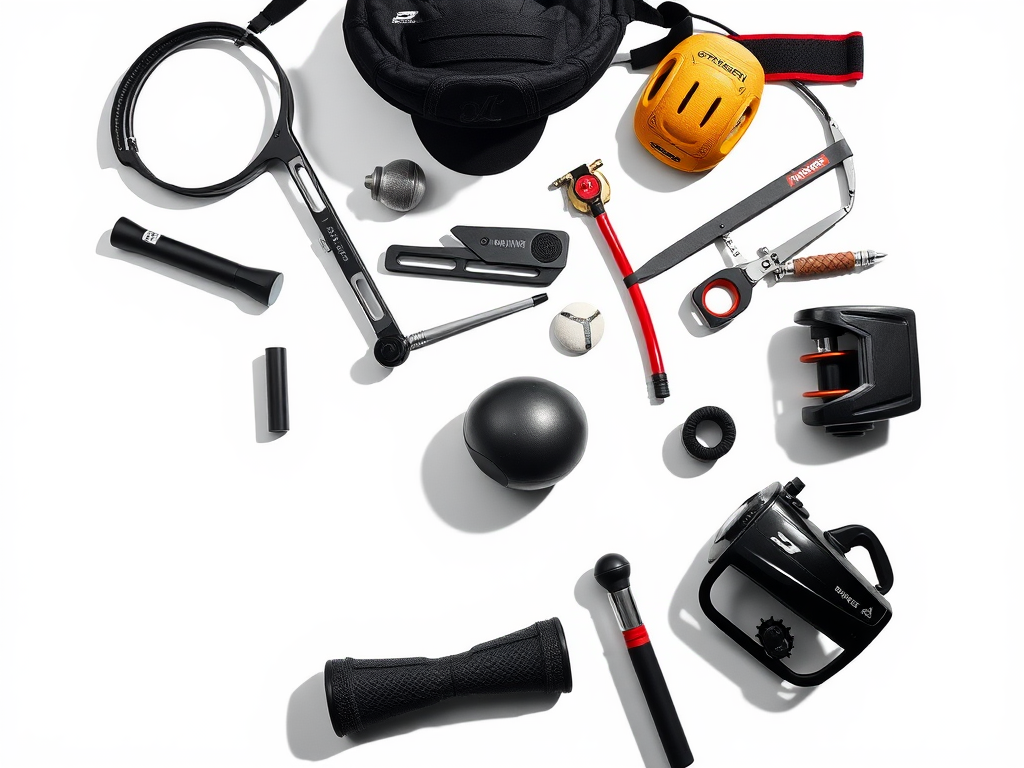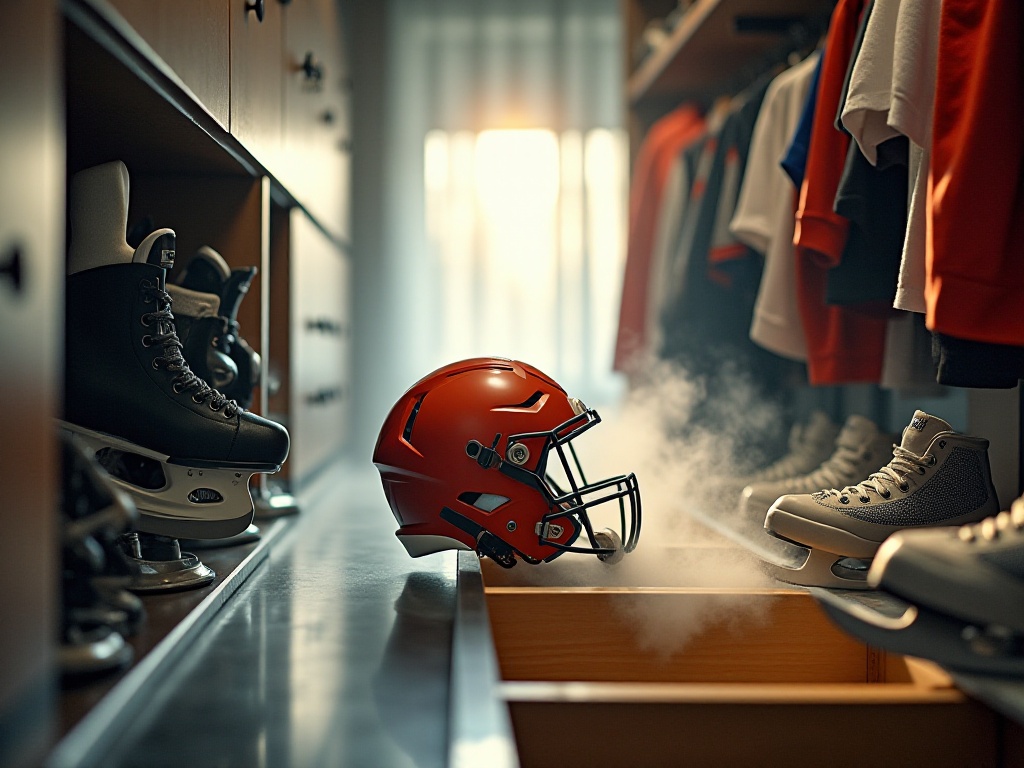The Challenge
As a fitness enthusiast, I was truly overwhelmed by the mountain of sports equipment piling up at home. My room had become a dumping ground for sports gear, with everything jumbled together in chaos. Basketballs and yoga mats were collecting dust in corners, while tennis rackets and hiking poles leaned drunkenly against walls. Whenever I wanted to exercise, I had to dig through this mess of stuff - just finding a yoga mat could take half a day, often leading me to give up exercising altogether.
I was really distressed at that time, watching these expensive pieces of sports equipment buried in clutter made my heart ache. Until last year, I finally couldn't take it anymore and decided to give my sports equipment a proper home. After some research and practice, I discovered that storage is truly an art that requires a perfect combination of wisdom and creativity.
Space Planning
Honestly, when I started researching storage solutions, I realized how inefficiently I had been using space before. We instinctively pile things on the floor and stuff them into cabinets, completely ignoring the super useful storage space on walls and ceilings. These overlooked spaces are actually the hidden bosses of storage!
I'll never forget my first shocking experience with wall storage. I spent a weekend installing an adjustable hook system on one wall of my room. This system was like the Transformer of storage - through different hook combinations, it could perfectly accommodate various sports equipment storage needs. Most amazingly, sports equipment that previously took up over 3 square meters of floor space was now neatly hung on the wall, easily accessible whenever needed - it couldn't get better than that!
Speaking of ceiling space, it's truly a forgotten treasure. I installed a super cool sliding storage system on my garage ceiling, which was like creating a sky hotel for seasonal sports equipment. Items like snowboards and surfboards that used to pile up on the floor now all lived in storage boxes on the ceiling. When needed, a gentle pull brings the storage box down, and it can be pushed back up after use, leaving floor space completely unaffected. This design is really amazing - every time friends visit, they can't help but exclaim in amazement.
However, safety is crucial when installing these storage systems. I specifically consulted a renovation expert to ensure each hook and track was securely fixed to the wall and ceiling. After all, sports equipment isn't light - safety comes first. I also custom-ordered some reinforced brackets based on the weight and shape of different equipment, so even heavier items could hang securely on the wall.
When planning the space, I paid special attention to lighting. I placed the most frequently used equipment in well-lit areas, making it not only convenient to access but also easy to monitor their condition. I even installed motion sensor lights in some key locations so I wouldn't have to fumble in the dark when getting things at night.

Categorized Storage
The essence of storage is establishing a scientific and rational classification system. After countless attempts and adjustments, I finally found the classification method that works best for me.
First are the daily essential sports equipment. I keep items like yoga mats and running shoes, which I use several times a week, on a custom storage rack by the entrance. This rack was specially customized according to my needs, with dedicated compartments for shoes and vertical slots on the side for yoga mats. The most thoughtful feature is a small drawer on top for storing small sports accessories like headbands and wristbands.
For seasonal sports equipment, I implemented a super practical rotation system. It's summer now, so surfboards, diving gear, and swimming equipment are placed in the most accessible positions. Winter items like ski equipment and snow boots are all stored in ceiling storage boxes. When seasons change, I spend a day doing a major rotation, adjusting all equipment to their most suitable locations.
To better manage this equipment, I created a detailed inventory recording the storage location and maintenance cycle of each item. I keep this list on my phone, so I can quickly check where any equipment is when needed. Through this list, I can also identify which items need maintenance or replacement.
When categorizing, I paid special attention to usage scenarios. For example, I keep all equipment for the same sport together. Tennis rackets, balls, and sports bags are stored in the same area, making it convenient to gather all necessary equipment for a tennis session at once.

Maintenance
Honestly, I used to be quite careless, thinking sports equipment was just for using without paying much attention to maintenance. This led to several costly lessons, with several expensive pieces of equipment being ruined due to poor maintenance. After learning these hard lessons, I developed a simple but very effective maintenance plan.
The most important thing is immediate post-workout care. Whether it's running shoes after a run or rackets after playing, I immediately do a simple cleaning after use. For equipment that gets sweaty, like yoga mats and protective gear, thorough wiping is essential. I always keep disinfectant wipes in my sports bag to clean equipment immediately after use, which maintains cleanliness and prevents bacterial growth.
Every month, I set aside a day for thorough cleaning and inspection of all sports equipment. While this process is a bit tedious, it's really necessary. Through regular inspections, I've discovered several potential safety hazards, such as yoga mats starting to peel or jump ropes showing wear - problems that could cause accidents during exercise if not discovered and addressed promptly.
For equipment made of special materials, I use specific cleaning and maintenance methods. For example, leather boxing gloves need to be wiped with special cleaner after each use and air-dried in a ventilated place to maintain the leather's flexibility and lifespan. Metal equipment needs regular checking for rust, with anti-rust oil applied when necessary.
I've also bought special protective covers or storage bags for each valuable piece of equipment. These protectors not only prevent dust and moisture but also protect equipment from scratches during storage and transport. Although buying these accessories costs money, it's worth the investment considering how much longer the equipment lasts.

Practical Tips
When it comes to practical storage tips, I have so many insights to share! First is the color coding system, which is absolutely magical for storage! I use different colored storage boxes to distinguish different types of sports equipment - red boxes for ball sports equipment like basketballs and volleyballs; blue boxes for water sports gear like goggles and swim caps; yellow boxes dedicated to yoga and fitness equipment. This classification method not only looks super organized but also makes finding things incredibly easy, with no worry about grabbing the wrong items.
For equipment with special shapes, I've come up with various clever solutions. For instance, my bicycle used to just lean against the wall, not only taking up space but also risking tire deformation from long-term improper storage. Later, I installed a professional bike rack on the garage wall, which not only saves lots of space but also makes the bike look like a piece of art hanging there!
To maximize space usage, I paid attention to detail in design. For example, I added small hooks on the back of storage racks for hanging lightweight equipment like fitness bands and pedometers. I stuck detailed item lists on the sides of storage boxes so I can know what's inside without opening them.
I also set up a simple supply station in the sports equipment area for essential items like sports drinks, energy bars, and towels. This way, I don't have to run around looking for things when preparing to exercise - everything needed is in one place, super convenient.

Conclusion
Looking back now, this storage transformation has truly changed my exercise life. Sports equipment that once chaotically occupied 10 square meters is now neatly stored in 2 square meters of space, with each piece having its dedicated spot, findable within seconds when needed.
Most importantly, this orderly storage system has greatly increased my motivation to exercise. Previously, just finding equipment would waste half a day; now I can grab what I need instantly, making exercise feel effortless and natural. Plus, seeing this organized storage space always puts me in a great mood, as if igniting my passion for exercise!
Actually, storage isn't about how much space you have, but how smartly you use every inch of it. Through reasonable planning and creative design, even a small space can achieve unexpected storage results. I hope my experiences can inspire fellow sports enthusiasts, helping us all make our exercise spaces more neat and organized!









